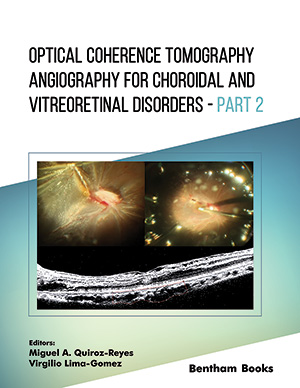摘要
背景:氯胺酮是一种广泛使用的麻醉剂。尽管在青少年时期使用氯胺酮的潜在不良影响尚不确定,但某些研究报告称,暴露于反复麻醉的儿童可能面临运动功能和行为风险方面神经发育缺陷的风险增加。我们的目的是研究反复接触不同剂量的氯胺酮对幼年大鼠焦虑行为和运动活动的长期影响。 目的:我们旨在研究反复接触不同剂量的氯胺酮对幼年大鼠焦虑行为和运动活动的长期影响。 方法:将 32 只 Wistar Albino 幼年雄性大鼠随机分为 5 mg/kg、20 mg/kg 和 50 mg/kg 氯胺酮(KET)和生理盐水(C 组)组,连续 3 天在 3-小时间隔 3 剂。最后一次 KET 剂量后十天,通过开放场测试 (OFT)、高架十字迷宫 (EPM) 和明暗盒 (LDB) 分析行为参数。使用 Kruskall-Wallis 检验进行统计分析,然后进行 Dunn 的多重比较检验。 结果:与 C 组相比,50 mg/kg KET 组的无支撑饲养行为减少。与 C 组相比,50 mg/kg KET 组的不正确过渡时间、总梳理时间和转移潜伏期显着增加。 结论:这些结果表明,50 mg/kg KET 会导致类似焦虑的行为并破坏记忆和空间导航。氯胺酮剂量与氯胺酮对幼年大鼠焦虑样行为的后期影响有关。需要进一步的研究来确定在氯胺酮剂量对焦虑和记忆的不同影响中发挥作用的机制。
关键词: 焦虑,氯胺酮,运动活动,记忆,大鼠,空间导航。
[http://dx.doi.org/10.1021/jm00326a019] [PMID: 14332667]
[http://dx.doi.org/10.3389/fnhum.2016.00612] [PMID: 27965560]
[http://dx.doi.org/10.1038/aps.2016.5] [PMID: 27018176]
[http://dx.doi.org/10.3389/fnins.2021.672526] [PMID: 34566558]
[http://dx.doi.org/10.1017/S1092852919001238] [PMID: 31339086 ]
[http://dx.doi.org/10.1016/j.bja.2021.06.005] [PMID: 34272059]
[http://dx.doi.org/10.1097/ANA.0000000000000027] [PMID: 24275940]
[http://dx.doi.org/10.1101/cshperspect.a005710] [PMID: 22510460]
[http://dx.doi.org/10.1097/ALN.0000000000000673] [PMID: 25901843]
[http://dx.doi.org/10.1016/S0166-4328(02)00272-3] [PMID: 12644276]
[http://dx.doi.org/10.1016/j.tacc.2014.03.002]
[http://dx.doi.org/10.1038/nature17998]
[http://dx.doi.org/10.1038/s41380-021-01246-3] [PMID: 34376822]
[http://dx.doi.org/10.3390/brainsci11010027] [PMID: 33383707]
[http://dx.doi.org/10.1097/ANA.0000000000000121] [PMID: 25144506]
[http://dx.doi.org/10.1016/j.brainresbull.2006.01.010] [PMID: 16564431]
[http://dx.doi.org/10.3389/fnbeh.2016.00226]
[http://dx.doi.org/10.1177/0023677217738268] [PMID: 29310487]
[http://dx.doi.org/10.1037/h0071444]
[http://dx.doi.org/10.1016/S0014-2999(03)01272-X] [PMID: 12600700]
[http://dx.doi.org/10.1016/j.bbr.2019.112084]
[http://dx.doi.org/10.21307/ane-2018-031] [PMID: 30624431]
[http://dx.doi.org/10.1016/0166-4328(94)90008-6] [PMID: 7913324]
[http://dx.doi.org/10.21307/ane-2020-022] [PMID: 32990283]
[http://dx.doi.org/10.1080/10253890.2018.1438405] [PMID: 29451062]
[http://dx.doi.org/10.1038/nrn.2015.8] [PMID: 26675822]
[http://dx.doi.org/10.1007/BF00504983] [PMID: 6149466]
[http://dx.doi.org/10.1016/0165-0270(85)90031-7] [PMID: 2864480]
[http://dx.doi.org/10.4314/tjpr.v18i11.13]
[http://dx.doi.org/10.1038/srep31286] [PMID: 27503239]
[http://dx.doi.org/10.3389/fnbeh.2018.00304] [PMID: 30574075]
[http://dx.doi.org/10.1016/0091-3057(80)90067-2] [PMID: 6106204]
[http://dx.doi.org/10.1016/j.neuropharm.2012.12.009] [PMID: 23337256]
[http://dx.doi.org/10.1016/j.neuroscience.2015.01.008] [PMID: 25595985]
[http://dx.doi.org/10.1016/j.biopsych.2013.04.027] [PMID: 23790225]
[http://dx.doi.org/10.1038/srep21322] [PMID: 26888470]
[http://dx.doi.org/10.3791/52434] [PMID: 25742564]
[http://dx.doi.org/10.1016/j.lfs.2010.09.004] [PMID: 20837032]
[http://dx.doi.org/10.3389/fpsyt.2021.659052] [PMID: 34045982]
[http://dx.doi.org/10.1016/0091-3057(85)90291-6] [PMID: 3991775]
[http://dx.doi.org/10.1016/j.jpsychires.2018.02.006] [PMID: 29475017]
[http://dx.doi.org/10.4196/kjpp.2019.23.1.81] [PMID: 30627013]
[http://dx.doi.org/10.1007/s11064-018-02715-y] [PMID: 30656595]
[http://dx.doi.org/10.9758/cpn.2021.19.1.93] [PMID: 33508792]
[http://dx.doi.org/10.4303/jdar/236060]
[http://dx.doi.org/10.1016/j.nbd.2019.104669] [PMID: 31707118]
[http://dx.doi.org/10.1155/2020/5798285] [PMID: 32308676]
[http://dx.doi.org/10.1016/S1474-4422(13)70278-3] [PMID: 24556010]
[http://dx.doi.org/10.3892/mmr.2020.11328] [PMID: 32705208]
[http://dx.doi.org/10.30802/AALAS-CM-18-000053] [PMID: 30696519]
[http://dx.doi.org/10.2147/DDDT.S221437] [PMID: 31695324]
[http://dx.doi.org/10.3791/52587] [PMID: 25867960]
[http://dx.doi.org/10.1038/nature10130] [PMID: 21677641]
[http://dx.doi.org/10.2399/ana.15.027]
[http://dx.doi.org/10.1017/S1461145714001011] [PMID: 24963561]
[http://dx.doi.org/10.1001/archpsyc.63.8.856] [PMID: 16894061]
[http://dx.doi.org/10.1016/j.ijdevneu.2009.06.010] [PMID: 19580862]
[http://dx.doi.org/10.1093/toxsci/kfn270] [PMID: 19126600]
[http://dx.doi.org/10.1126/science.283.5398.70] [PMID: 9872743]
[http://dx.doi.org/10.1016/j.ntt.2018.11.004] [PMID: 30472095]
[http://dx.doi.org/10.2174/157015911795017155] [PMID: 21886601]
[http://dx.doi.org/10.1111/cns.12099] [PMID: 23575437]





























